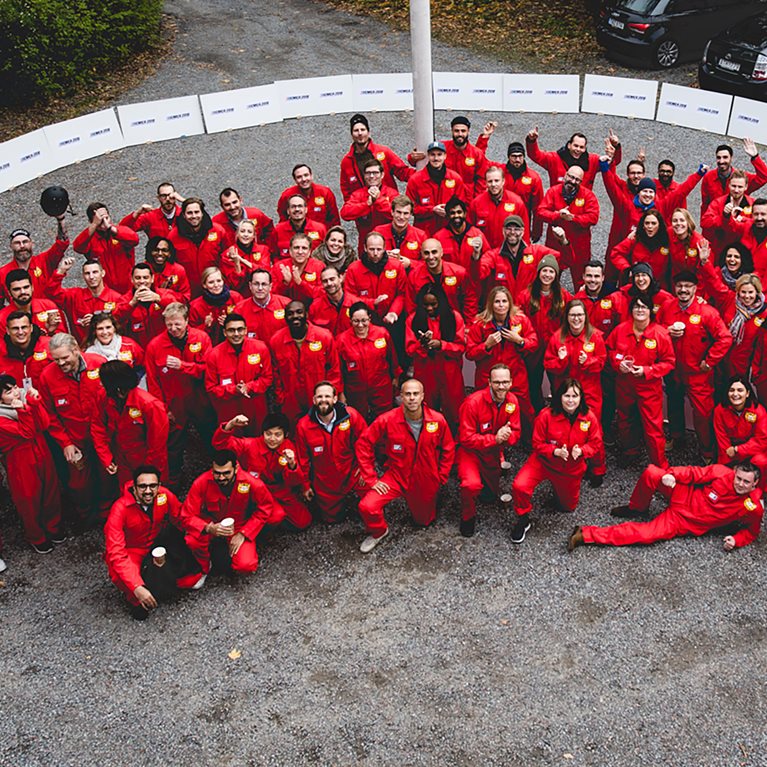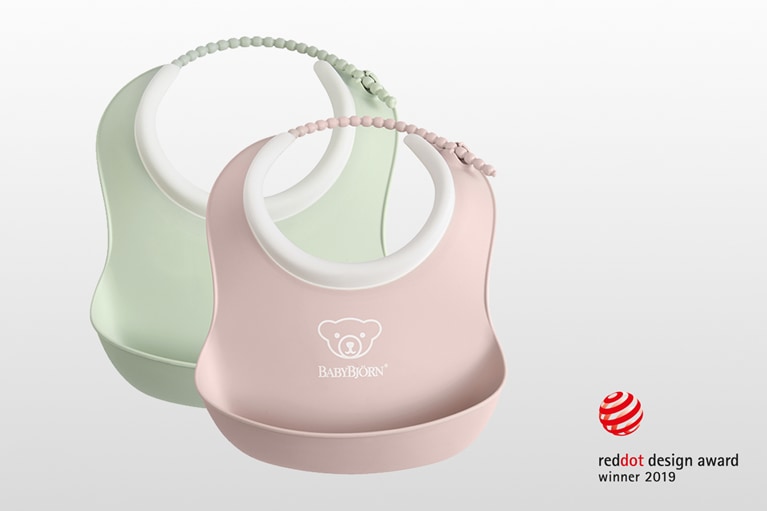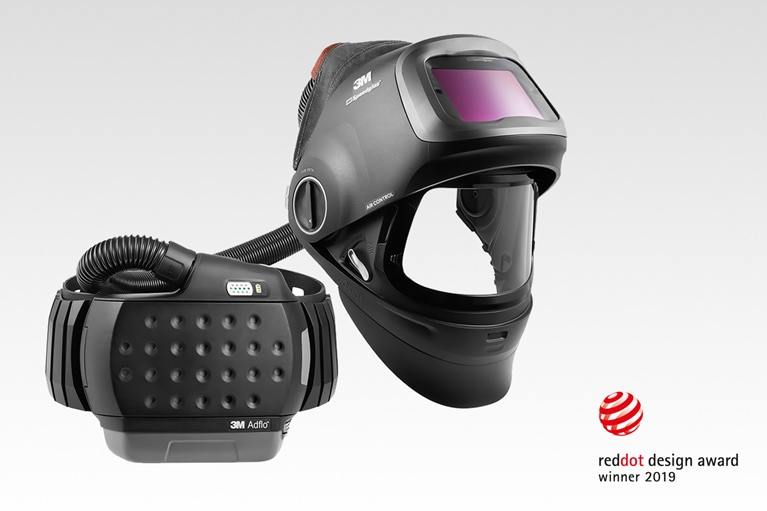What do baby bibs and a welding helmet have in common? They’re award winning products. We’ve been presented with two Red Dot awards, confirming our position as a groundbreaking global design firm. This year, the 3M Speedglas G5-01 heavy-duty welding helmet and the BabyBjörn small baby bib were awarded in the Red Dot Product Design category.

“This was the first time McKinsey Design won two great awards in the product design category of the Red Dot award,” says McKinsey Design global leader Hugo Sarrazin. “It’s truly a proud moment for our firm and our designers.”
BabyBjörn Bib
Our team applied a user-centric approach to help babies everywhere make a clean break from messy mealtimes. Working alongside parents and their little ones, Elisabeth Ramel-Wåhrberg, Peter Ejvinsson, Jonas Dolk, David Crafoord and Ulrika Vejbrink collaborated with BabyBjörn to design a new waterproof, dishwasher safe and adjustable bib.
The new product minimizes messiness by catching in its scoop any food or liquids that don’t make it into baby’s mouth. It also lets tiny diners freely move their arms and ensures their safety; the bib quickly and easily releases from the neck if it gets caught on anything.

3M Speedglas Welding Helmet
The team worked hard to ensure the end user remained top-of-mind when designing this next generation heavy-duty welding helmet. Throughout the process, they drew on extensive customer data that 3M collected from professional welders all over the world.
In particular, the helmet’s new design minimizes eye strain and helps workers breathe more easily, thanks to a feature that allows them to alter the way air is routed into the mask.

The Nitty Gritty: Our designers weigh in
We had the privilege to sit down and talk shop with Oskar Juhlin, the Stockholm studio designer of the Red Dot-winning welding helmet. On July 8th he’ll celebrate the award together with the other designers involved – Jan Puranen, Hans Nyström, Emelie Hedén Edlund and Frida Åberg – at the glamorous Red Dot Gala in Essen, Germany.
- When did you start working with 3M Speedglas? The Stockholm Design studio (formerly Veryday) started working with Speedglas in 1982. Åke Hörnell invented purple-tinted glass that automatically darkens the instant a welding arc is lit and lightens up when it is extinguished. At that time his one-man company was based in his cellar. By the time he sold his company to 3M, it was a global market-leading multi-million-dollar business. The rest is history. I started working with the welding helmet by 3M Speedglas in 1995.
- What’s special about the welding helmet and why has it been internationally awarded along each of its generations? It works as a natural extension of the wearer, allowing the welder to feel completely prepared and focused on the task at hand. We conducted a lot of in-depth studies with groups of diverse users. New prototypes and solutions were tested together with actual users. This collaboration resulted in specific design details to increase efficiency. Among the new features, the 3M Speedglas G5-01 is comfortable and light on the inside with a more integrated, compact design on the outside that increases safety and agile use. Variable air distribution is a key feature that allows users to alter the route of fresh air without breaking the clean air seal.
- What excites you about the user population or incorporating welders into the process? I have been designing welding shields since 1997 so you may think that nothing would surprise me, but I always find it very inspiring to see how engaged and proud they are in their profession. And the gear they have…a welder is truly a welder to the core! As a welder, the shield becomes a part of your face. In some cases they look scarier than they are, but they do want to show their identity. Creating a strong personal connection between the product and the end user is always critical to the design. Since motor sports are a strong interest among many welders, the design team wanted to capture the essence of that particular look and feel. The helmets are customizable to many user identities.
- What did you most enjoy about working on this project? Throughout the process we were given time to get very deep into the design problem – what we wanted to express, not just the brand, but the mood and focus of the product. Then we had a very good and inspiring collaboration with the client team. We are given a lot of trust by 3M and we really enjoyed fulfilling their expectations.
- How does the client hope the product evolves or changes the behaviors of current and future users? The overarching goal is always to create better working conditions and better performance. An example of this outcome is when the previous version of this helmet that we designed in 2009 (the Speedglas 9100 FX) became the recommended shield for U.S. railway workers, work-related injuries dropped by 70 percent. It is this type of figure that gives my work meaning. It also shows that a well-designed product improves performance and reduces costs from medical leave or rehabilitation.